Related Research Articles

The Colonial Dames of America (CDA) is an American organization comprising women who descend from one or more ancestors who lived in British North America between 1607 and 1775, and who aided the colonies in public office, in military service, or in another acceptable capacity. The CDA is listed as an approved lineage society with the Hereditary Society Community of the United States of America.

Arabella Mansfield, born Belle Aurelia Babb, became the first female lawyer in the United States in 1869, admitted to the Iowa bar; she made her career as a college educator and administrator. Despite an Iowa state law restricting the bar exam to males, Mansfield had taken it and earned high scores. Shortly after her court challenge, Iowa amended its licensing statute and became the first state to accept women and minorities into its bar.
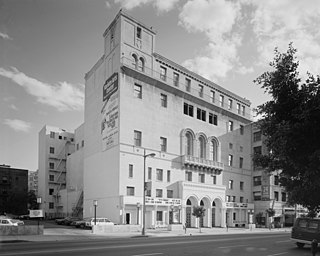
The Friday Morning Club building is located in Downtown Los Angeles, California. It was the second home of the women's club also named the Friday Morning Club (FMC), for 61 years.
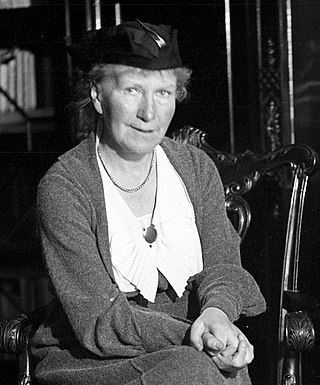
Emilie Gourd (1879–1946) was a Swiss feminist and journalist. She played a leading part within the Swiss women's suffrage movement. She was the president of one of the two leading Swiss suffrage unions, the Swiss Women's Association, during 1914–1928.

Oda Hunt Faulconer was an early 20th century lawyer and judge and the president of the Bank of Italy, San Fernando, and West Adams State Bank, Los Angeles.
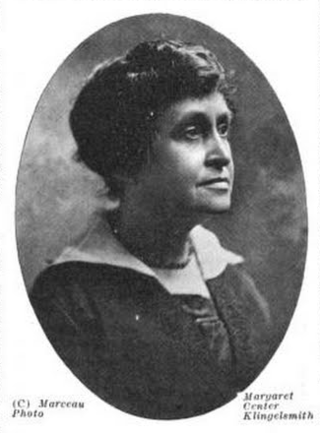
Margaret Center Klingelsmith was an American suffragist, lawyer, translator, and law librarian.
This timeline provides an overview of the political movement for women's suffrage in California. Women's suffrage became legal with the passage of Proposition 4 in 1911 yet not all women were enfranchised as a result of this legislation.

The women's suffrage movement began in California in the 19th century and was successful with the passage of Proposition 4 on October 10, 1911. Many of the women and men involved in this movement remained politically active in the national suffrage movement with organizations such as the National American Women's Suffrage Association and the National Woman's Party.
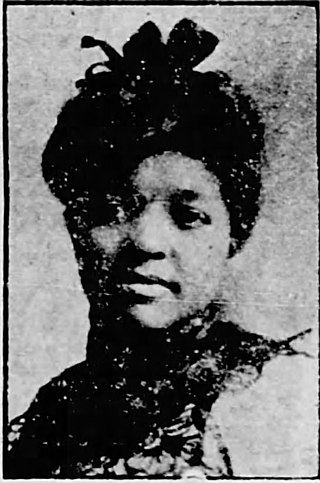
Ida Clark DePriest was an African-American suffragist, activist, and clubwoman, known for her work for women's suffrage in Colorado.

Women's suffrage began in Illinois began in the mid-1850s. The first women's suffrage group was formed in Earlville, Illinois, by the cousin of Susan B. Anthony, Susan Hoxie Richardson. After the Civil War, former abolitionist Mary Livermore organized the Illinois Woman Suffrage Association (IWSA), which would later be renamed the Illinois Equal Suffrage Association (IESA). Frances Willard and other suffragists in the IESA worked to lobby various government entities for women's suffrage. In the 1870s, women were allowed to serve on school boards and were elected to that office. The first women to vote in Illinois were 15 women in Lombard, Illinois, led by Ellen A. Martin, who found a loophole in the law in 1891. Women were eventually allowed to vote for school offices in the 1890s. Women in Chicago and throughout Illinois fought for the right to vote based on the idea of no taxation without representation. They also continued to expand their efforts throughout the state. In 1913, women in Illinois were successful in gaining partial suffrage. They became the first women east of the Mississippi River to have the right to vote in presidential elections. Suffragists then worked to register women to vote. Both African-American and white suffragists registered women in huge numbers. In Chicago alone 200,000 women were registered to vote. After gaining partial suffrage, women in Illinois kept working towards full suffrage. The state became the first to ratify the Nineteenth Amendment, passing the ratification on June 10, 1919. The League of Women Voters (LWV) was announced in Chicago on February 14, 1920.

Women's suffrage began in Nevada began in the late 1860s. Lecturer and suffragist Laura de Force Gordon started giving women's suffrage speeches in the state starting in 1867. In 1869, Assemblyman Curtis J. Hillyer introduced a women's suffrage resolution in the Nevada Legislature. He also spoke out on women's rights. Hillyer's resolution passed, but like all proposed amendments to the state constitution, must pass one more time and then go out to a voter referendum. In 1870, Nevada held its first women's suffrage convention in Battle Mountain Station. In the late 1880s, women gained the right to run for school offices and the next year several women are elected to office. A few suffrage associations were formed in the mid 1890s, with a state group operating a few women's suffrage conventions. However, after 1899, most suffrage work slowed down or stopped altogether. In 1911, the Nevada Equal Franchise Society (NEFS) was formed. Attorney Felice Cohn wrote a women's suffrage resolution that was accepted and passed the Nevada Legislature. The resolution passed again in 1913 and will go out to the voters on November 3, 1914. Suffragists in the state organized heavily for the 1914 vote. Anne Henrietta Martin brought in suffragists and trade unionists from other states to help campaign. Martin and Mabel Vernon traveled around the state in a rented Ford Model T, covering thousands of miles. Suffragists in Nevada visited mining towns and even went down into mines to talk to voters. On November 3, the voters of Nevada voted overwhelmingly for women's suffrage. Even though Nevada women won the vote, they did not stop campaigning for women's suffrage. Nevada suffragists aided other states' campaigns and worked towards securing a federal suffrage amendment. On February 7, 1920, Nevada became the 28th state to ratify the Nineteenth Amendment.

Women's suffrage had early champions among men in Arkansas. Miles Ledford Langley of Arkadelphia, Arkansas proposed a women's suffrage clause during the 1868 Arkansas Constitutional Convention. Educator, James Mitchell wanted to see a world where his daughters had equal rights. The first woman's suffrage group in Arkansas was organized by Lizzie Dorman Fyler in 1881. A second women's suffrage organization was formed by Clara McDiarmid in 1888. McDiarmid was very influential on women's suffrage work in the last few decades of the nineteenth century. When she died in 1899, suffrage work slowed down, but did not all-together end. Both Bernie Babcock and Jean Vernor Jennings continued to work behind the scenes. In the 1910s, women's suffrage work began to increase again. socialist women, like Freda Hogan were very involved in women's suffrage causes. Other social activists, like Minnie Rutherford Fuller became involved in the Political Equality League (PEL) founded in 1911 by Jennings. Another statewide suffrage group, also known as the Arkansas Woman Suffrage Association (AWSA) was organized in 1914. AWSA decided to work towards helping women vote in the important primary elections in the state. The first woman to address the Arkansas General Assembly was suffragist Florence Brown Cotnam who spoke in favor of a women's suffrage amendment on February 5, 1915. While that amendment was not completely successful, Cotnam was able to persuade the Arkansas governor to hold a special legislative session in 1917. That year Arkansas women won the right to vote in primary elections. In May 1918, between 40,000 and 50,000 white women voted in the primaries. African American voters were restricted from voting in primaries in the state. Further efforts to amend the state constitution took place in 1918, but were also unsuccessful. When the Nineteenth Amendment passed the United States Congress, Arkansas held another special legislative session in July 1919. The amendment was ratified on July 28 and Arkansas became the twelfth state to ratify the Nineteenth Amendment.
Mary Elizabeth Simpson Sperry was a leading California suffragist who served as president of the California Woman Suffrage Association.
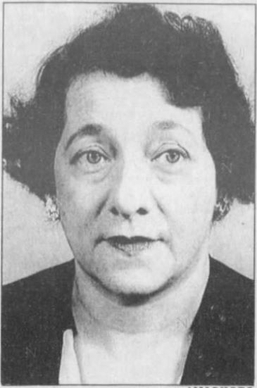
Rose S. Zetzer was an American lawyer. She was the first woman to gain admission to the Maryland bar and the founder of Maryland's first all-female law firm.

Rosalind Goodrich Bates was an American lawyer and clubwoman, based in Los Angeles, California. She was a trial attorney who practiced international law and served as a Judge Pro Tem in the Los Angeles Superior Court. She was a founder and president of the International Federation of Women Lawyers (FIDA).
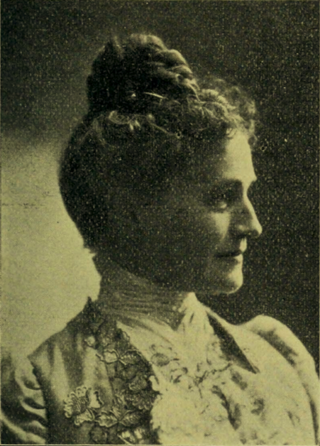
Mary Anna Clara Coulter was an American lawyer and politician.

Emilie Moritz Bullowa was an American lawyer. She was the first president of the National Association of Women Lawyers. After graduating from the Law College of New York University in 1900, she established a law firm with her brother, specializing in admiralty law. She advocated for women's equality and was a member of the Women Lawyers Association and the Women's City Club of New York. She served on the board of the New York Medical College and Hospital for Women and was its president from 1921 to 1942.
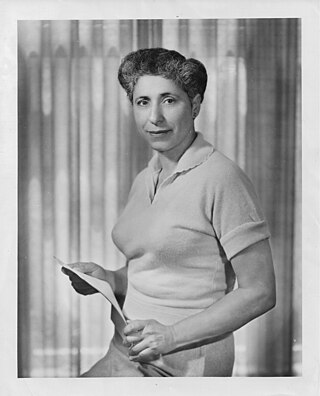
Eva M. Mack, aka Eva Mack and Eva Mack Ringwald was an American woman lawyer based in Los Angeles, California who joined the law firm of Hugh Ellwood Macbeth Sr., in the 1940s before opening her own law office in 1956.
References
- ↑ About NAWL, nawl.org, Retrieved 20 February 2015
- ↑ NAWL History, nawl.org, Retrieved 20 February 2015
- ↑ Smith, Selma Moidel. A Century of Achievement: The Centennial of the National Association of Women Lawyers, Women Lawyers Journal (85:2, Summer 1999) (reprinted from ABA Senior Lawyers Division Experience Magazine, Fall 1998 & Winter 1999)
- ↑ Club Women of New York, p. 116 (1914)
- ↑ 125 Years of Women Lawyers in Illinois - Professional Associations, Chicago Bar Association, Retrieved 20 February 2015
- ↑ History, National Association of Women Lawyers. Records of the National Association of Women Lawyers, 1913-1999: A Finding Aid, Harvard University Library (2013)
- 1 2 3 4 Endres, Kathleen L.; Lueck, Therese (1996-11-25). Women's Periodicals in the United States: Social and Political Issues. Bloomsbury Academic. ISBN 978-0-313-28632-2.
- ↑ Lawyers, National Association of Women (1975). 75 Year History of National Association of Women Lawyers, 1899-1974: (the First Seventy-five Years). the Association.
- ↑ Appel, Tamar Kaplan (31 December 1999). "Emilie M. Bullowa". Jewish Women's Archive. Shalvi/Hyman Encyclopedia of Jewish Women. Retrieved 10 July 2023.
- 1 2 3 Binheim, Max; Elvin, Charles A. (1928). Women of the West: A Series of Biographical Sketches of Living Eminent Women in the Eleven Western States of the United States of America. Los Angeles: Publishers Press. Retrieved August 6, 2017.
 This article incorporates text from this source, which is in the public domain .
This article incorporates text from this source, which is in the public domain . - ↑ "Kate Hamilton Pier is laid to rest on wedding day; many pay tribute". Eagle River News: 4–5. 1925. Retrieved 15 September 2017.
- ↑ Smith Jr., J. Clay (1999). Emancipation: The Making of the Black Lawyer, 1844-1944. University of Pennsylvania Press. p. 236. ISBN 9780812216851.
- ↑ "Our New President - Olive Stott Gabriel". Women Lawyers' Journal. Vol. 18, no. 1. January 1930. Retrieved 2020-06-25.
- ↑ Rasmussen, Fred (April 9, 1998). "Rose Zetzer, 94, founded 1st all-female law firm in Md". The Baltimore Sun. p. 11n – via Newspapers.com.